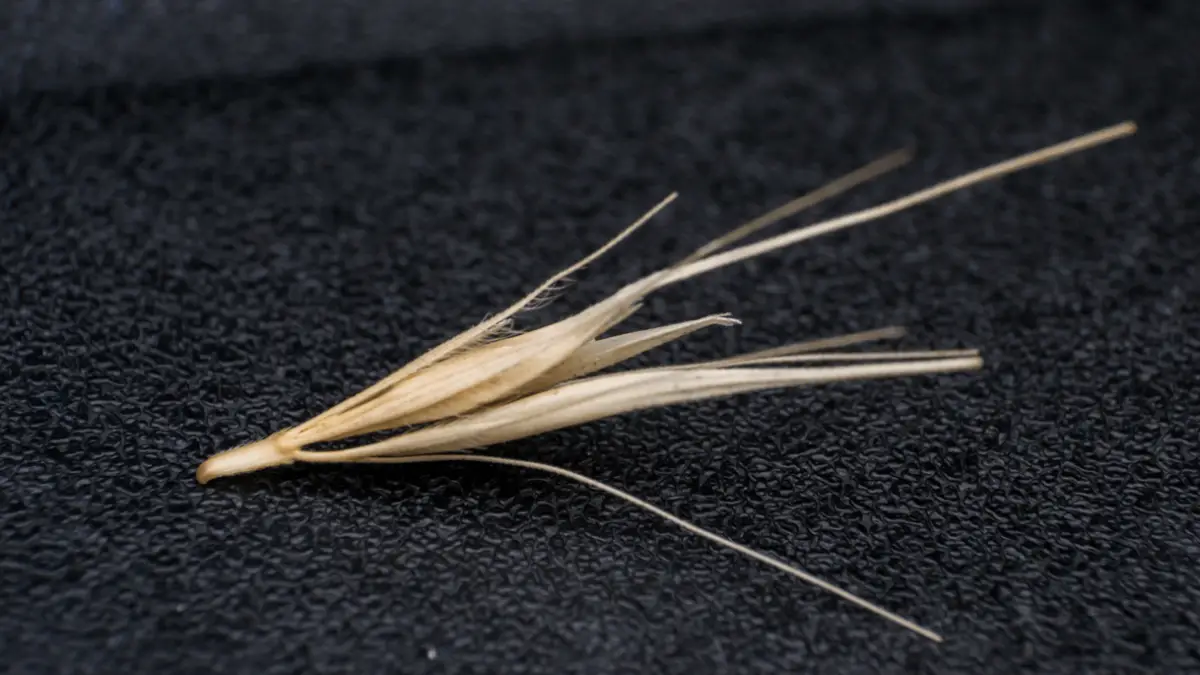Foxtails & Dangers They Pose to Dogs
26.07.2021.
Foxtails pose a severe threat to dogs and cats. If you are a dog owner, you should be aware of the potential danger your dog could be in if they are regularly playing in parks or fields full of the foxtail plant. As kids, we loved picking the barbed seed heads and throwing them like darts. However, we had no idea how dangerous they can actually be. Here is what you should know about the foxtail plant and the hidden dangers it presents.
What is a foxtail?
Foxtails, or grass seed awns, are seasonal weeds that appear during summer, and they pose a certain risk to dogs. This plant starts growing in spring and fully blossoms in summer. This plant looks like the fox’s tail, and it has spikey clusters with backward-facing barbs. The spikes allow for one-way burrowing. That is the plant’s survival technique which is pretty bad for dogs and other animals that get in close contact with the plant.
Why is the plant dangerous?
The foxtail plant is not toxic, but the tiny barbs can get stuck in your dog and cause all sorts of issues. Dogs that mostly get hurt by this weed are usually hunting dogs whose job is to move through areas generally full of these tiny plants. The barbed tip of the plant gets lodged between the dog’s pads, where they can get infected.
The main problem with this plant is that it will not dissolve inside the dog’s body. They can even travel through the skin while causing havoc. Foxtails can cause issues like discharge, pain, swelling, abscesses, and in worst cases, death. Here are some of the most sensitive areas that require special care and protection;
Eyes
Your dog’s eyes can quickly become permanently damaged by the foxtail. Dogs love sniffing and putting their head everywhere. That makes their eyes vulnerable to the pointy seed heads of the foxtail. If you suspect your dog’s eye has a foxtail lodged in there, you should call your vet immediately.

Ears
Your dog’s ears are just as vulnerable as their eyes. A tip of the plant can quickly get stuck deep in your dog’s ear canal, where it can be nearly impossible for you to see. If you notice your dog is leaning towards one side or shaking their head excessively, you should take them to the vet.
Feet
One of the most exposed parts of your dog is their feet. Dogs don’t wear protective gear like shoes on their feet, so it is easy for a foxtail to get lodged between their pads. If that happens, you should take care of it as soon as possible and make sure your dog’s wound is treated.
Nose
Your dog’s nose can get hurt by a foxtail. This dangerous plant can get lodged in one of your dog’s nostrils, and it cannot be pulled out easily. Due to its shape, the foxtail can only travel further inward. If it gets lodged in the dog’s nose, it can travel to the brain or lungs and pierce them. One of the tell-tell signs your dog’s nose is compromised is if your dog sneezes constantly.
Genital area
Another exposed and at-risk area is the dog’s genital area. This irritating little plant can get lodged in your dog’s genitals. If you notice your dog constantly licking their genitals, the nasty foxtail can be the culprit.
How to notice your dog has foxtails?
All dog owners should pay close attention to their dogs. If you notice anything suspicious about their behavior, you should examine the area and look for signs your dog has a foxtail lodged somewhere. The most common symptoms of foxtails in dogs are;
- Pawing
- Sneezing
- Bloody nose
- Snorting
- Excessive licking
- Limping
- Head shaking
- Draining tracts
- Bumps
- Lumps
- Tender and red areas
IMPORTANT NOTICE: Foxtails can be deadly if they are left untreated. You should take your dog to the vet as soon as you notice something wrong with them, especially if you think a foxtail is causing trouble.
Preventing foxtail injuries
As a responsible dog owner, you should do anything you can to prevent your dog from getting hurt by a foxtail. We know that can be impossible sometimes (especially since we had a foxtail injury recently). Still, you should make sure your dog is as safe as possible. Here are some helpful tips on how to prevent foxtail injuries from happening;
- Keep your garden clean of foxtails
- Trim the dog’s hair during summer
- Check your dog’s sensitive areas after a hike through the area filled with foxtails
- Avoid areas with foxtail
- Don’t try to dislodge the foxtail yourself; take your dog to the vet
- If you noticed infected areas, redness, or swelling, take your dog to the vet
- If you can’t avoid foxtail, get some dog booties to cover their feet
In conclusion
Foxtail presents a serious danger to dogs and other pets. You should avoid areas you know are filled with foxtail and check your dog after every walk. You can never be too sure your dog didn’t step on it, even if you haven’t walked through grassy areas.
World Dog Finder team







Share